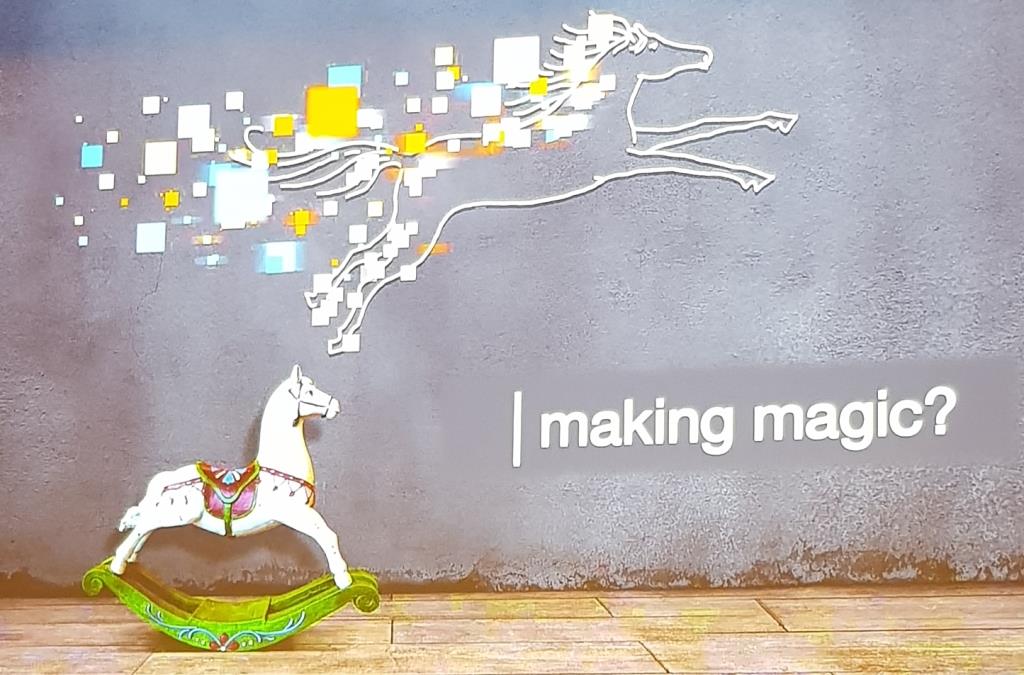Wiser Technology Advice Blog
- HOME
- WISER-TECHNOLOGY-ADVICE-BLOG
- I DON T KNOW WHAT S REAL ANYMORE
I don't know what's real anymore!

02 August 2018
Last week I attended Hybrid World Adelaide 2018, a two-day conference with many excellent local and international speakers.
Our world is changing rapidly, with the ever-accelerating pace of change taking us toward a world where every device is connected, everything's automated, and the lines between reality and the digital world are blurred beyond control.
Is it human or artificial?
Prof. Genevieve Bell (Director of the 3A Institute, Florence Violet McKenzie Chair, Distinguished Professor at the Australian National University (ANU), Vice President and Senior Fellow at Intel) gave us examples of the line between of art and digital technology blurring. We don't know any more whether photo art, cinematic effects or music are created by an artist or were digitally generated. She postulated that in the future artificial intelligence could be able to surprise and delight. The âyou might also like' suggestions we see now when we're shopping online come from an algorithm using past interactions, and are fairly predictable in what they suggest, making it obvious a machine's done the work. If future algorithms are able to come up with a surprise, suggesting something out of left-field to surprise and delight us, it would seem much more like a human's imaginative thinking.
This theme was expanded on by Dr Phillip Alvelda, founding CEO of Cortical.ai, a U.S. based developer of anthropomorphic AI and machine learning tools, digital twins, and synthetic personalities. He's developing technology that will replicate, improve and augment human brains. An implantable human interface for the brain is coming soon, to provide people suffering from locked in syndrome, blindness, or deafness with a new way to communicate and physically interact with the world through robotic limbs.
These advances in technology, artificial intelligence and robotics are providing fantastic opportunities for the future of disability and aged care. Once the artificial intelligence becomes more human-like and less artificial, the line between human carers and technology support will blur and combine into a new reality.
With tele-presence, we already have the ability to remotely interact with people, with a combination of robots and a Skype-like interface. This is a great boon for people who find it hard to leave their home. In the future we may be able to have a robot with a synthetic personality that appears to be a human interface but is in fact completely artificial, and the day could come where we won't know the difference between humans and androids.
What does the future hold?
On the second day of the conference we heard from speakers from Australia and the USA about space technology and research shaping our future.
Dr Christyl Johnson (Deputy Center Director for Technology and Research Investments, NASA Goddard Space Flight Center) inspired us with her examples of all the technology that's been developed by NASA and has filtered down into everyday consumer technology. Examples of technology transfer include biomedical tracking used by sports teams and streamlined racing swimsuits developed in collaboration with Speedo. There are many more examples of technology spin-offs listed here: spinoff.nasa.gov. NASA's goal is to make humans âearth independent' and the challenge is to develop technology that allows us to inhabit Mars. The first step on this journey will be a robotic round-trip to Mars in the late 2020s, then NASA aim to send humans on a trip to orbit Mars in the early 2030s.
Dr Paddy Neumann (Neumann Space) and Flavia Tata Nardini (Fleet Space) followed, enlightening us on Australia's contributions to the space race, launching satellite technology that will help create a hyper-connected world. They're both grateful for the support of the Australian Space Agency, which has been actively enabling cooperation and supporting entrepreneurs in the field since 1st July 2018.
Today only 10% of the world has internet coverage, as you'll know when you travel outside a capital city and suffer withdrawal symptoms from the loss of social media. Whilst NBN satellites cost around $600bn to build, nano-satellites which are the size of a shoe-box and can be launched into a lower orbit around the world cost only around $200,000 each. Fleet Space have already launched nano-satellites that allow sensors in remote locations to be connected into systems. The future of satellite technology is to allow everything to be connected everywhere, no matter how remote, creating a hyper-connected world.
Satellite technology combined with Adelaide's Ten Gigabit city high-speed internet, will provide us with a hyper-connected world. The Internet-of-Things with everything connected all the time by default will support the future connected systems that are all-encompassing. This will unlock the potential of technology that currently runs in isolation, bringing together what we need to trust autonomous vehicles and supply chains where products can be tracked via sensors even while in transit on the high seas.
The future holds so many exciting possibilities as we move towards the space age and the cost of technology is always decreasing, making it possible for small business owners and entrepreneurs to come along for the journey.
